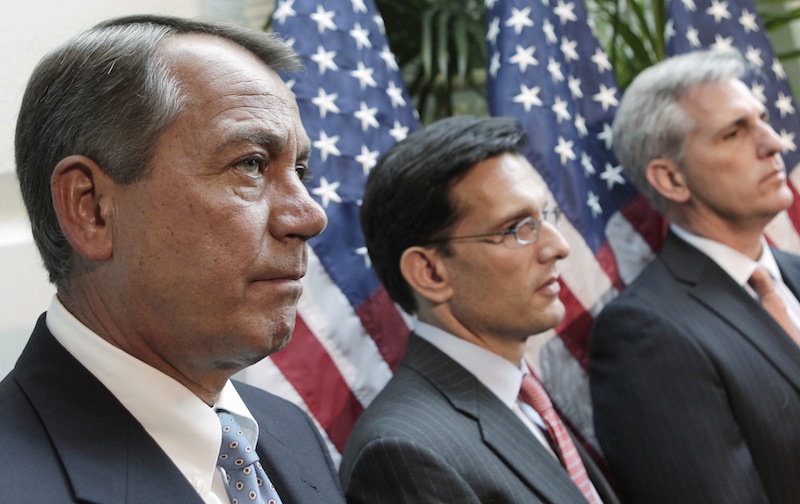With the final enrollment figures expected Thursday, House GOP leadership decided to fully take up the mantle of Obamacare trutherism. House Majority Whip Kevin McCarthy’s office released a full “debunking” of the fabled 7 million sign-ups that the administration touted earlier this month.
The supposedly unanswered questions — intended, as the headline of McCarthy’s release makes perfectly clear, to call the official numbers into question — are familiar to the budding enrollment trutherism movement. The only problem is several of the questions have already been answered. Others, the administration has said it doesn’t have the answers for, so House Republicans are left accusing the White House of blatantly withholding information.
“After two delays by the Administration, on March 31st Obamacare’s health insurance exchanges ended open enrollment with a purported 7.1 million signed up,” McCarthy’s release begins. “President Obama declared that ‘the debate over repealing this law is over. The Affordable Care Act is here to stay.’ But this is hardly the end of the story.”
McCarthy’s office then outlined five data points it wanted to know about, alleging that the Obama administration “has refused to provide key information that would shed light on the true number of enrollees.” Those are:
- How many effectuated enrollment (signed up and paid a premium)
- How many paid their first month’s premium but not their second or third
- How many were previously uninsured
- How many young and healthy signed up (affecting rates)
- How many received a subsidy (raising concerns about fraud)
At least two of those have been explicitly explained in the enrollment reports released by the Obama administration — and updated data will presumably be included in the March report expected Thursday.
The February enrollment report included information on the last two: the demographics of enrollees and data on how many were eligible for financial assistance. First, 25 percent of the 4.2 million people who had enrolled through February were ages 18 to 34, the crucial “young and healthy” group. Second, 83 percent of those who signed up for a plan were eligible for financial help.
On the premium question, the administration has insisted that, because people pay insurance companies directly, only insurers have that information. Outside estimates have put the number at 80 to 90 percent of enrollees have paid. As for how many enrollees were previously uninsured, HealthCare.gov and most of the state websites didn’t collect that particular data point. Independent estimates put the number at one-third or so, although it seems that the uninsured comprised a bigger share of the late enrollment surge. They were also covered via Medicaid, which isn’t included in the 7 million number.
The question about whether people paid their second and third premiums appears new, and it’s unclear why that has now become a concern for the GOP.
Some of these questions are not wholly without basis. The demographics of Obamacare enrollees are important for the law’s long-term fiscal sustainability. People do need to pay their premiums for their coverage to take effect. One of the law’s stated goals was covering the uninsured.
But the framing of the House GOP’s release — “Debunking Obamacare’s 7 million Enrollees ‘Success’ Story”, insinuating that “the true number of enrollees” isn’t known — makes clear that its goal is to undermine the law’s unexpected patch of good news since open enrollment ended.
TPM raised these issues with McCarthy’s office, which still asserted that the administration “cannot let the American public know how many were previously uninsured, how many actually signed up for coverage they need, and how many weren’t kicked off of coverage they previously enjoyed.”
“Just because they gave us some data two months ago does not mean they gave us any clear and final data on enrollment when the President trumpeted the law as a success in the Rose Garden on live television,” Mike Long, a McCarthy spokesman, said in an email. “To proclaim ‘Mission Accomplished’ based solely on the number of clicks, without regard of knowing how those 7.1 million were affected, makes light of the seriousness that is health coverage of Americans.”
“House Republican leadership and various Committees have requested this information through hearings and by passing legislation. We’ve been stonewalled each time.”






